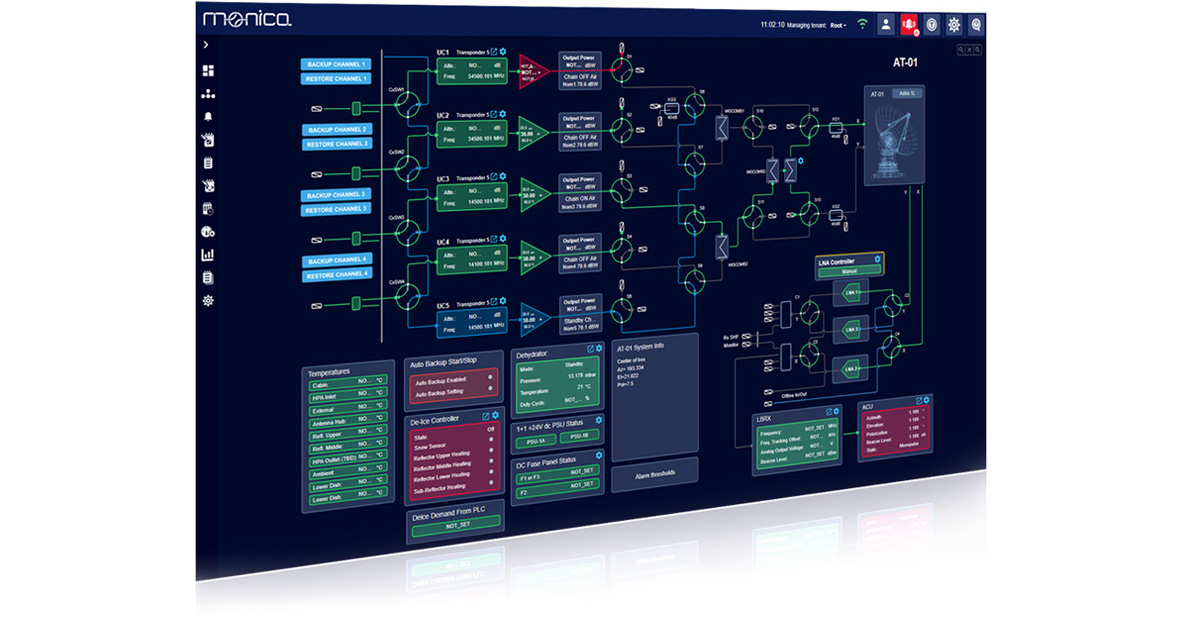Release of Monica version 7
At the beginning of April, we released a new major version of Monica - v7.0.0, after 1.5 years of development. Monica is a next generation monitoring and control solution (M&C) for the satellite ground segment and is one of two flagship products of Amphinicy Technologies. The changes were based on discussions with our customers, including ground station operators, commercial satellite teleports, satellite operators, and broadcasters. We are thankful to our colleagues at the European Space Agency (ESA), who contributed to a part of this upgrade.
Monica v7 represents a major leap forward in several aspects. At the architectural level, changes were implemented to allow adaptation for distributed, cloud-based systems. This involves one central M&C instance with lightweight Remote Agents, which significantly simplify remote site installation and hardware requirements, thus reducing operational cost and future maintenance. The provisioning of Remote Agents is facilitated through a redesigned GUI, where instruments simply need to be configured with a Remote Agent ID, and the rest is managed by Monica.
Along with the updated, distributed architecture, Monica’s performance has significantly increased, using up to 50% less CPU compared to v6, which used traditional central polling.
The support for cloud-based monitoring and control was developed in collaboration with the European Space Agency (ESA). The project manager from ESA supervised the project from the requirements definition and has approved the delivery of new features.
On the technical and feature level, we have thoroughly revamped the instrument manager module, offering a more conclusive and easy-to-handle layout. We have also refined the driver editor, which has been simplified and redesigned to offer sleeker parameter configuration, enhanced translations with better UX, and an integrated Dependencies tab that contains all the relevant information for linking parameters. To make this all really easy and accessible regardless of the environment, a Binary Packet Definition performs all the required logic for data extractions, including a visualisation with color-coded segment types, allowing easy configuration and visualisation of packet-based responses with any number of parameters.
As previously suggested by customers and integrators, we have now added driver slots to Monica, allowing multiple connections in a single instrument adapter as well as sharing a single connection between multiple instrument adapters.
As of version 7, Monica’s architecture has become fully modular, where optional modules can be skipped during installation on both the Backend and Frontend. It goes without saying that the tech stack has been fully upgraded in version 7, with all major frameworks and libraries being upgraded to newer versions. On the frontend side, the old AngularJS code has been completely rewritten to Angular, which eliminates the need for hybrid mode between ‘old' and new screens.
We believe this upgrade is our most conclusive and ambitious release to date. The roadmap looks very exciting, and we’re certain that you will appreciate the ease and simplicity this version brings to you.
Interested in learning more? Wish to share your feedback? How can we support your business and projects? Reach out to us!

